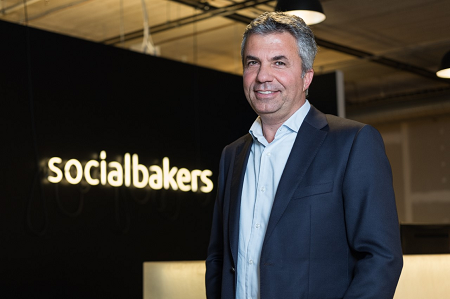This year saw many of us locked down at home for months. From the introduction of Zoom ‘Happy Hours’ to finally setting aside time to further our education and achieving our dreams, 2020 has pushed us to becoming more digitally grounded. Yuval Ben-Itzhak, President, Socialbakers provides a guide on what to expect in 2021, from social commerce to micro-influencers.
Who could have ever predicted 2020? The year which saw many of us locked down at home for months. The year which introduced Zoom “happy hours” to the world and the year in which pretty much all but the least tech savvy amongst us were forced online to further our education, get together with friends and, of course, shop. Nike’s CEO called it. He said that “today’s consumer is digitally ground and simply won’t revert back.” So armed with the learning from the trends we have seen in 2020, what should social media marketers be focusing on in 2021?
Social Commerce
Social commerce isn’t a new topic by any means, but it’s an area which many brands aren’t leveraging completely. We know that today’s consumer is predominately digital and users are purchasing more online than ever before. Since today social media platforms provide the tools to manage everything from product discovery to post purchase customer care and community management, it’s a no-brainer that businesses should be taking advantage of the reach and infrastructure that these platforms offer. In a time where more and more purchases happen online, by investing in the social commerce component of the customer journey smartly today, businesses will safeguard the revenue of tomorrow.
Social Messaging
The pandemic has had a huge impact on the way consumers engage with brands. While the impact has been wide-ranging, one area in which it can be clearly identified is in the use of conversational messaging. Today customer conversations have moved from traditional call centers and emails to social media and messaging apps. Customers are online and they expect brands to be there too, responding to their questions and providing feedback without delay. To meet the expectations of customers, we’ll see more brands looking to a hybrid model of human agents and AI-powered social chatbots. Conversational AI chatbots are being used by businesses to help them instantly flag and answer the repetitive, frequently asked questions, regardless of the volume, time of day or the language, they also act as the conduit for quickly escalating more critical conversions to agents.
Micro Influencers will continue to bring bang for the buck
Earlier this year, Socialbakers did an analysis on the State of Influencer Marketing, which examined how the COVID-19 pandemic has affected the influencer industry in the first half of the year. Among the key findings, we saw a clear pivot toward influencers with smaller, more niche followings that may offer greater value to brands with tighter marketing budgets. Nano and micro influencers emerged as high-value resources, bringing high impact without the big price tag of macro and mega influencers.
Earlier this year, Hanes, the US clothing brand, ran a campaign to encourage people to wear masks to prevent the spread of COVID19. With the #MaskAround campaign, Hanes used influencers to extend its reach among younger consumers, who are typically active on platforms like TikTok and Instagram and whose opinions are shaped by social media personalities. According to a survey by Econsultancy, almost 61% of people ages 18 to 34 said digital influencers have swayed their decision-making at some point. Data from Socialbakers shows that in 2020 more than 60% of brand/influencer collaborations on social were happening with influencers with less than 50K followers. We predict that in 2021 we will see that number rise as more brands will leverage the personalised, niche-specific powers of the nano and micro influencers.
By Yuval Ben-Itzhak
President
Socialbakers

